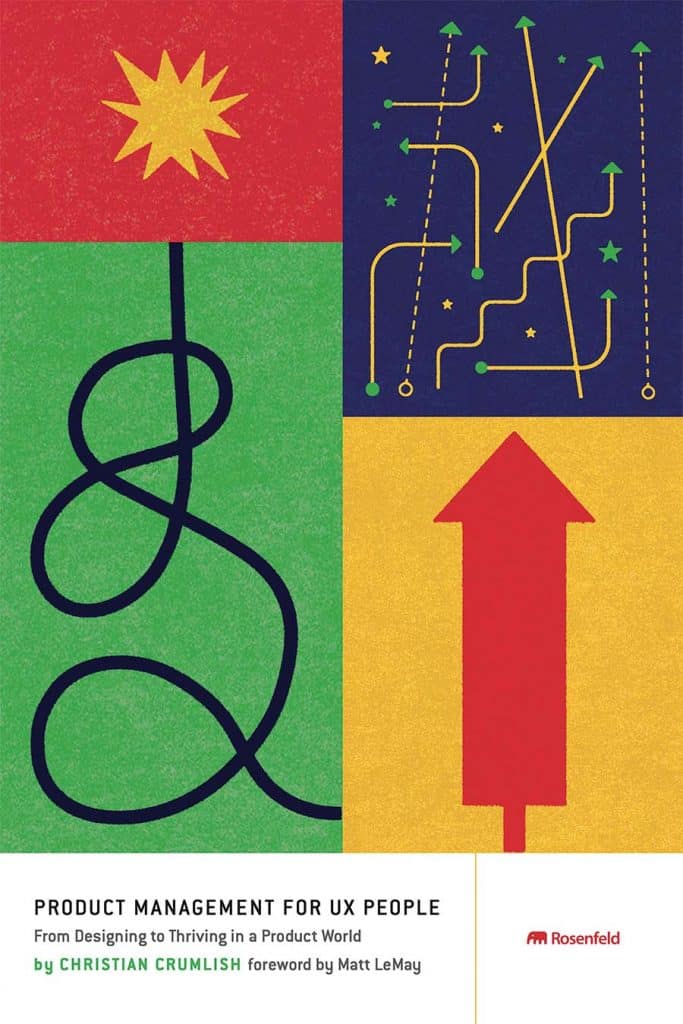
A review of
Product Management for UX People
Rosenfeld Media
240 pages, 11 chapters
About this book
by Christian Crumlish
A good reference for UX Theory and Case Studies
Primary audience: Researchers and Designers who have some or significant experience with the topic
Writing style: Matter-of-fact
Text density: Mostly text
Learn more about our book review guidelines
What do program managers do? Are they primarily concerned with business strategy, development cycles, reaching engineering milestones, reducing costs, time-to-market, product launches, etc? How do their goals and overall roles compare to those of UX practitioners who are focused on the user and are the voice of the customer? What are some of the issues that pose challenges for UX people working on product teams? What UX skills and tasks make for an easier transition from a UX role to a product manager?
“Product Management for UX People” by Christian Crumlish provides several ways for readers to not only learn what a product manager’s role is but also how they think and the context for decisions they make.
Crumlish describes typical product manager tasks including defining the product vision and business strategy, defining product requirements, collaborating with design and engineering teams, focusing on reducing costs and development time, and satisfying the stakeholders.
The author also discusses ways in which product manager and UX manager goals and decisions conflict. One area of conflict or friction relates to cost reduction and time constraints. A product manager may have pressure to meet established deadlines whereas the UX manager wants to do more usability testing and design iterations. Another example is business stakeholders may want certain product features but in some cases these features have not been sufficiently validated by UX testing and prototyping.
The author has handled this discussion of friction by highlighting common ground and overlap of skills. He describes major areas in which product managers share goals and collaborate on. These areas include Information Architecture, customer focus and problem solving through iterative design.
Some of the differences and similarities between product and UX manager roles are best illustrated by the list shown on page 150 and the diagram on page 151. These illustrations highlight skills and tasks that each does and where they overlap. Some of the typical day-to-day product manager tasks include to market research, sprint planning, bug tracking, roadmapping, and risk management. On the other hand, the typical day-to-day UX tasks include interaction and visual design, prototyping, creating personas and user journeys, and usability testing.
The book provides key insights or a list of takeaways at the end of each chapter. One example of a key insight is on page 50. “User researchers are natural allies to product managers, and UX research experience is a good foundation for product work.” These chapter summaries are very practical since they help the reader focus on key information and ideas presented.
Overall, this book provided a wealth of insight into what product managers do, how they think and how they can work effectively with UX people. This book also showed what UX skills and tasks can lend themselves to transitioning into a product management role.
I highly recommend you purchase this book for your professional library.
There will always be some overlap between the duties of product managers and UX professionals, but this overlap can function as a healthy tension if addressed forthrightly, or a wasteful turf battle if not.
Most UX designers look at this overlap and wonder how different the two roles really are or need be. For those people who are considering moving into a new role, this raises three important questions:
- Which of my existing skills have equipped me to be a product manager (and will continue to be helpful to me in that new role)?
- Which of my existing skills and expertise will be less relevant or entirely unneeded in a product role?
- What are the new skills and practices I will need to master to complement my foundation in UX?
So, what are the qualities of a UX professional that stand you in good stead as a product leader? It helps first to clarify the boundaries and distinctions between UX and product roles and responsibilities.
You’ll also need to dig a bit into the details and get specific about tasks and skills that might be in the domain of a product manager, product designer, or UX practitioner. Something called a skills histogram could give you a structured way to investigate these questions in your own context and landscape.
Then, with concepts clarified and the landscape mapped, you can take note of the specific areas of user experience mastery that most directly apply to a product management career.
Karen Shor has worked as a Usability Specialist and Human Factors Engineer, managing the usability labs, conducting many usability tests, and working with product development teams and stakeholders to implement test findings to improve the user experience and help drive business strategy.

